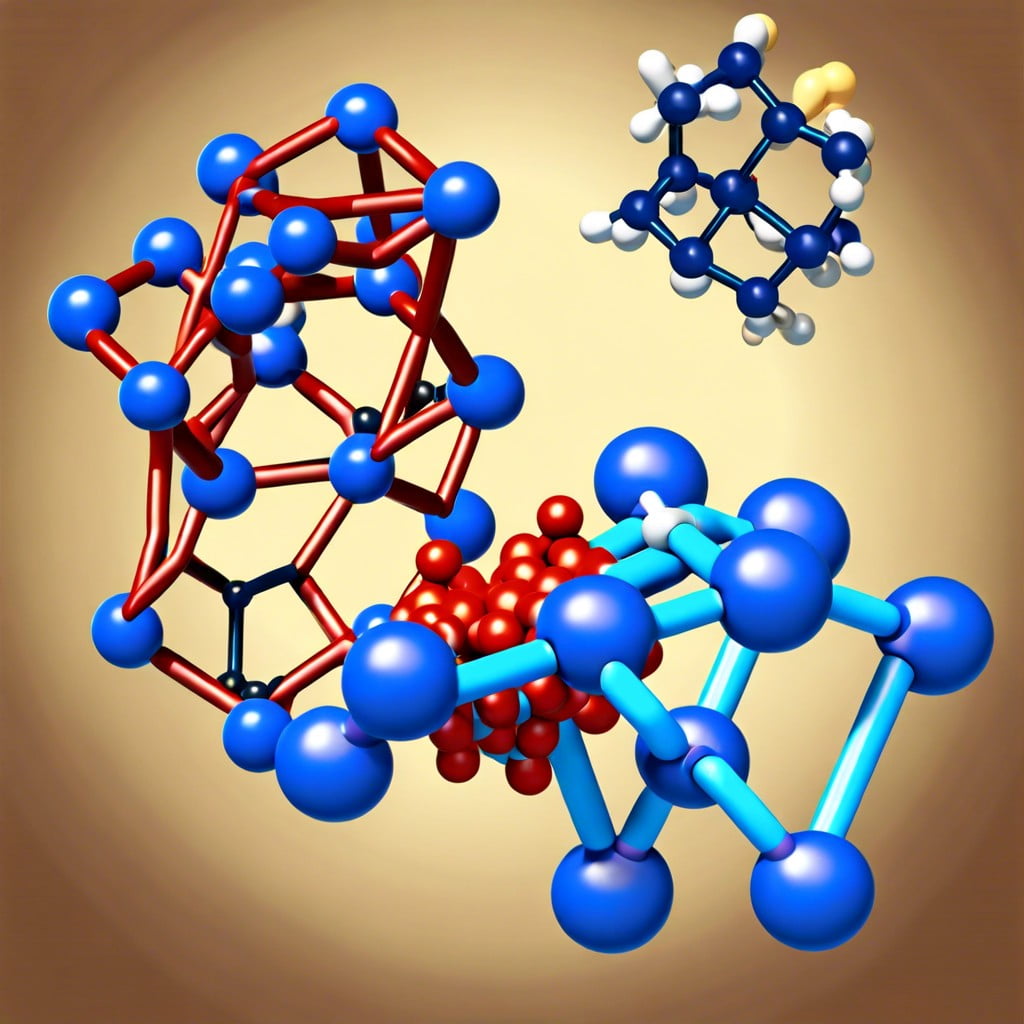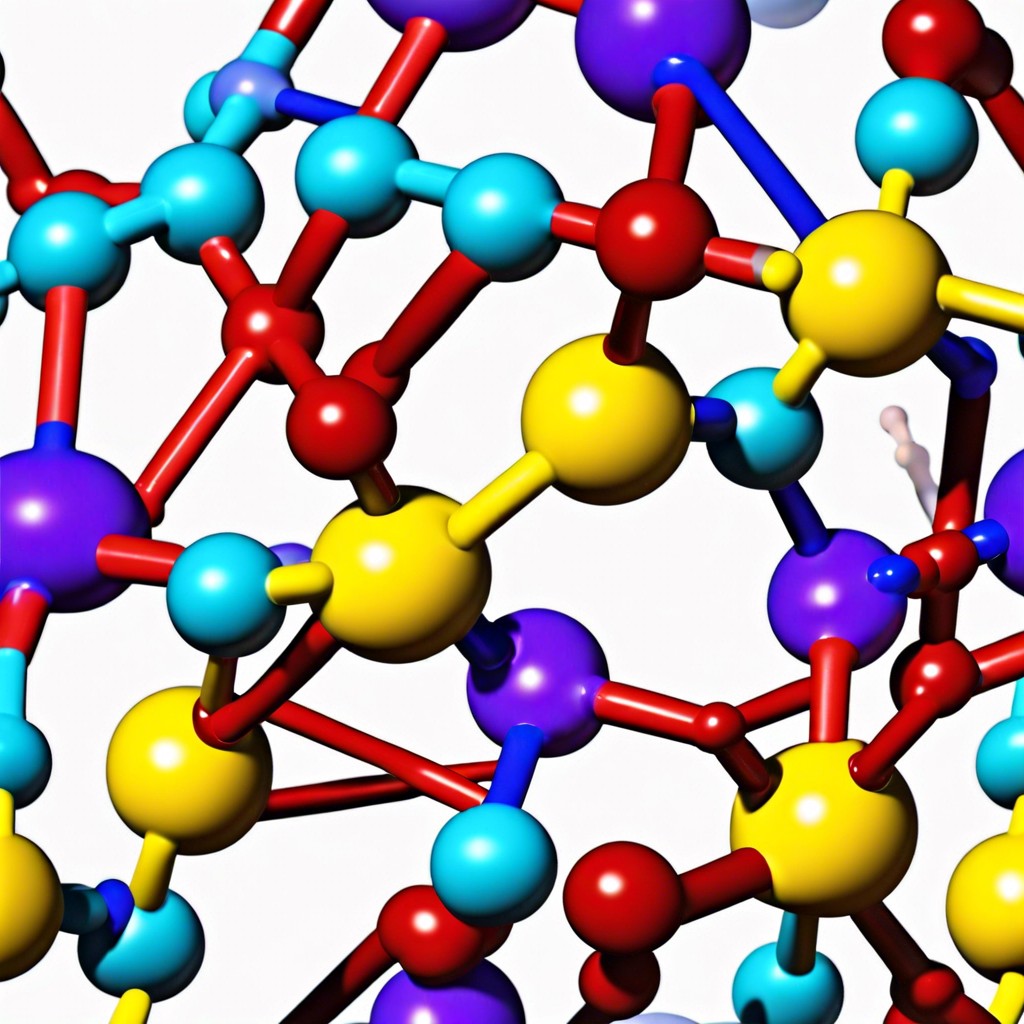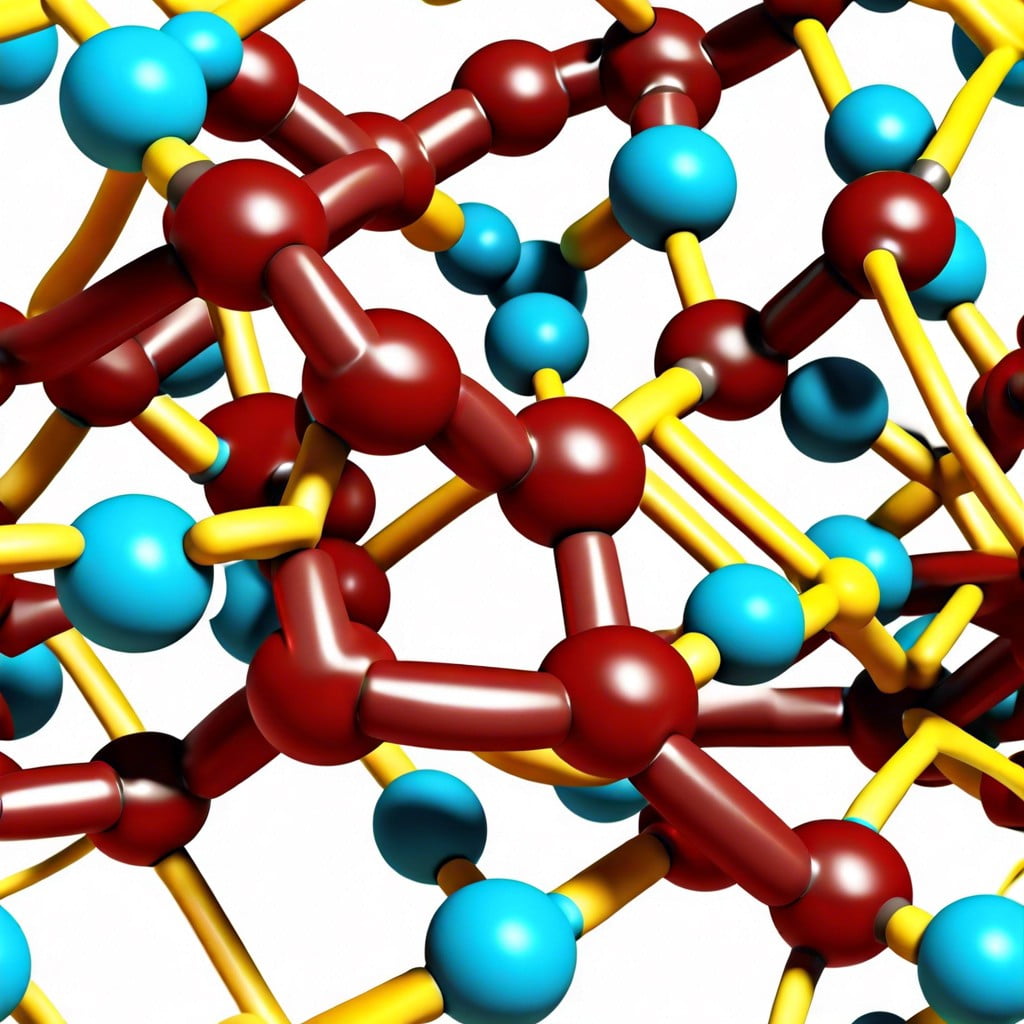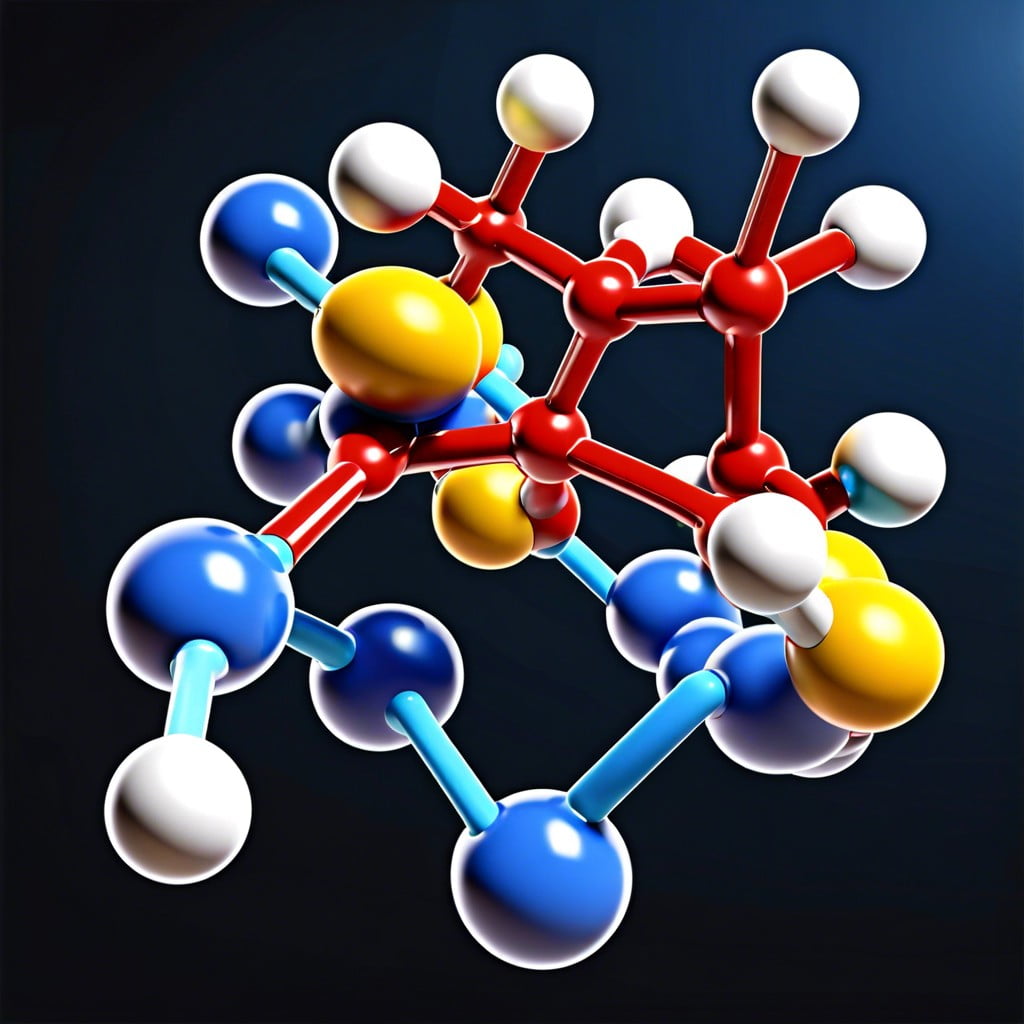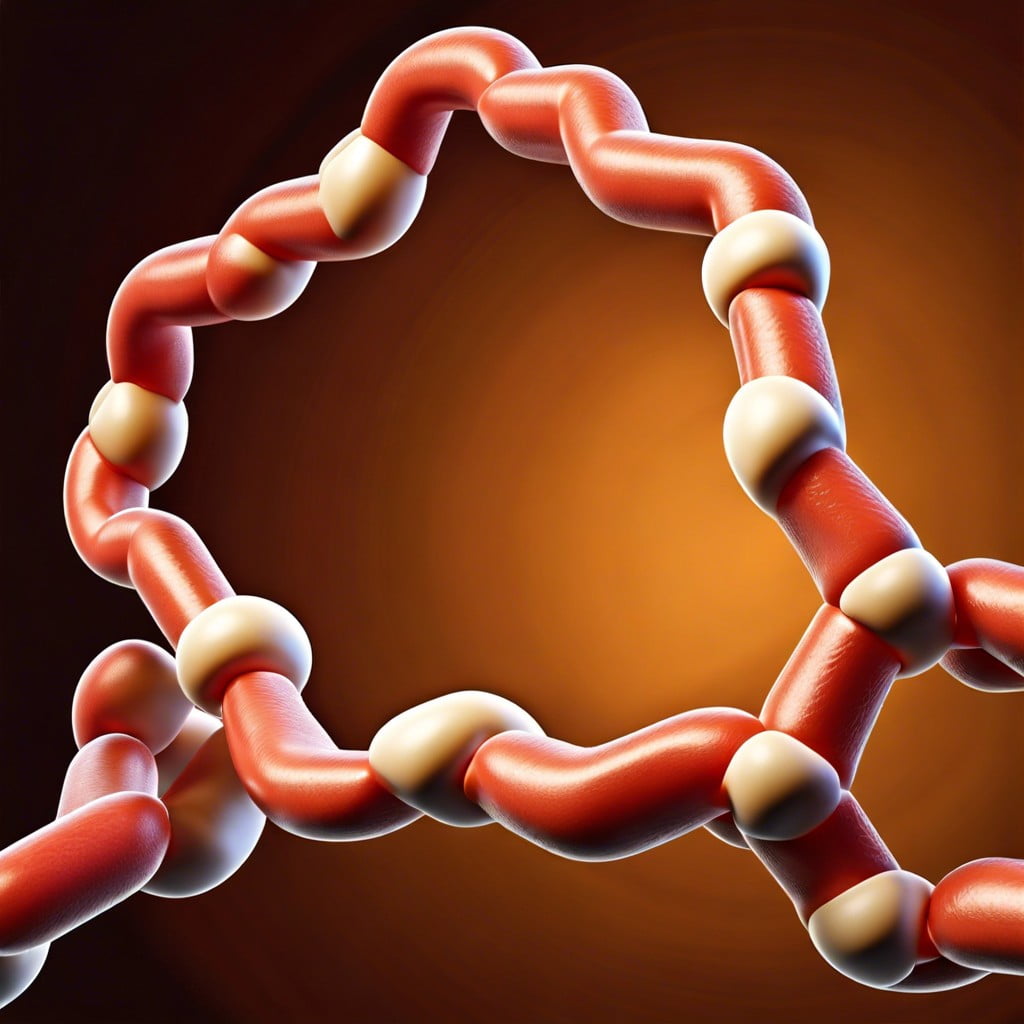In this article, you’ll learn about the structure and chemistry of polymers of proteins, their unique characteristics, and their importance in various applications.
Key takeaways:
- Polymers of proteins are long chains of amino acids.
- Amino acids are the building blocks of protein polymers.
- Protein structure consists of primary, secondary, tertiary, and quaternary levels.
- Proteins have various functions in organisms, including catalysis, structural support, and defense.
- Protein polymers have applications in medicine, food, agriculture, biotechnology, and textiles.
What You Will Learn
Definition of Polymer of Proteins
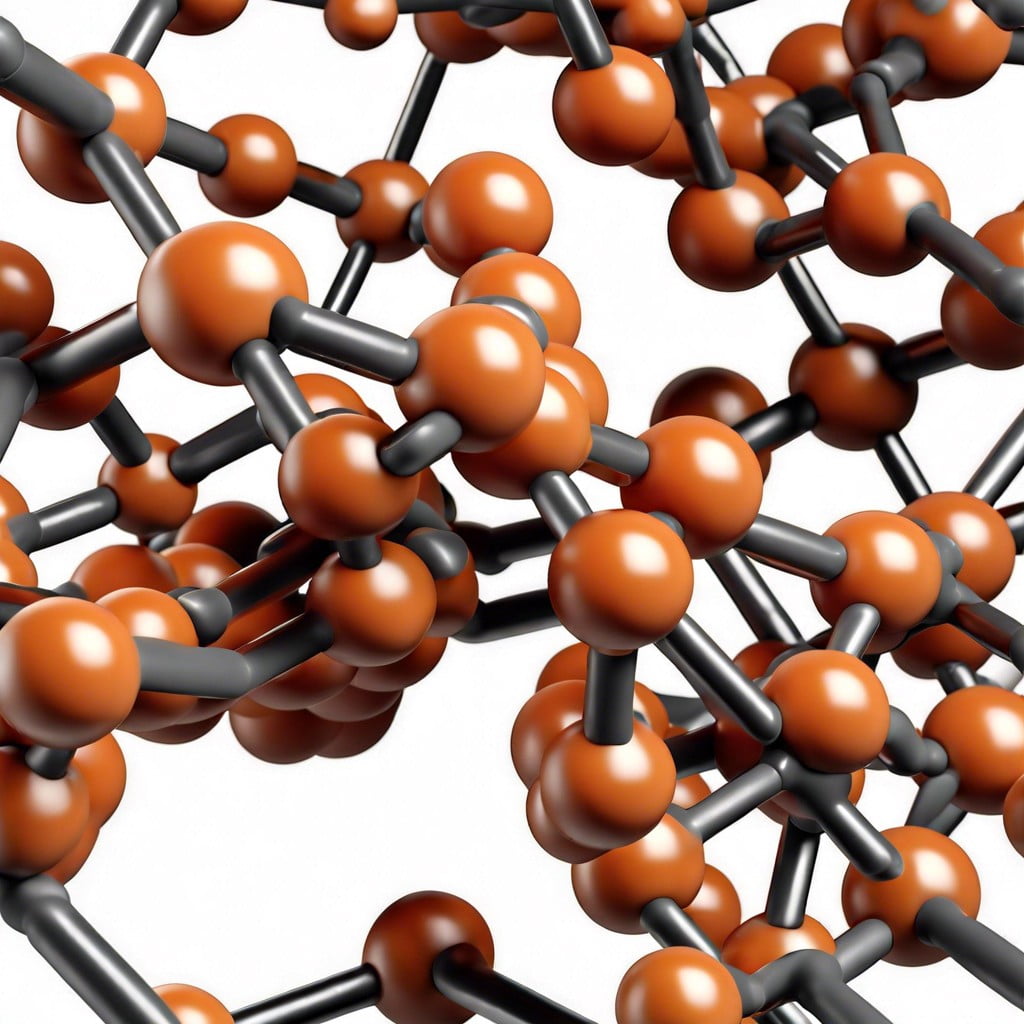
Polymers of proteins, commonly known as polypeptides, are long, complex chains formed by the linkage of amino acids through peptide bonds. Each protein’s unique sequence of amino acids determines its structure and function.
Their formation involves a process called polymerization, wherein amino acids are joined together by dehydration synthesis, releasing water molecules. These chains fold into specific shapes that are crucial for their biological roles.
They exhibit a vast array of functions, from catalyzing chemical reactions as enzymes to providing structural support in tissues. Given their significance, understanding these biological polymers is essential for advancements in healthcare, material science, and bioengineering.
Amino Acids As the Monomers of Proteins
Amino acids are the building blocks of protein polymers. Each protein is constructed from a sequence of amino acids linked together like cars on a train. Twenty different amino acids exist, and the sequence in which they’re assembled determines the protein’s unique characteristics.
Here’s how it works:
- Peptide Bonds: Amino acids are joined by peptide bonds, a type of covalent bond. When two amino acids link together, they release a molecule of water in a process called dehydration synthesis.
- R-Groups: Each amino acid possesses a side chain, known as an “R-group,” which defines its properties. The diversity of these side chains contributes to the vast array of proteins possible.
- Chirality: Amino acids can exist in isomers, specifically as mirror images called “L” and “D” forms. In proteins, only L-amino acids are incorporated, showing the specificity of these biological polymers.
- Amino Acid Sequence: The order of amino acids, determined by genetic information, forms a polypeptide chain. This primary structure is critical because it dictates the protein’s final shape and function after folding.
- Essential Amino Acids: Humans can produce some, but not all, amino acids. Those we can’t make are termed “essential amino acids” and must be obtained through our diet.
Understanding amino acids’ role in forming proteins helps us appreciate the complexity and precision of biological structures and their myriad functions in life.
Protein Structure Hierarchy
Understanding the intricacies of protein structure can be likened to unraveling a multilayered story, each layer revealing more complexity and functionality:
1. Primary Structure: This is the simplest level, akin to a string of pearls. Here, amino acids link together like beads, forming long chains through peptide bonds. The sequence of amino acids determines the protein’s unique properties.
2. Secondary Structure: Imagine the string of pearls twisting and turning. In proteins, parts of the chain coil into helices or fold into sheets due to hydrogen bonding. These shapes are critical for the stability and function of proteins.
3. Tertiary Structure: Picture the twists and folds of the chain creating a complex, three-dimensional object. This structure is shaped by various bonds and interactions among the amino acids, leading to a protein’s specific function.
4. Quaternary Structure: Finally, envision multiple chains linking together. Some proteins consist of more than one amino acid chain, forming a functional unit. This multi-chain complex can perform biological activities that individual chains cannot.
Each level of structure is essential for the protein’s ability to function within living organisms, from muscle contraction to immune responses.
Function of Proteins in Organisms
Proteins serve as the workhorses of cells, performing a vast array of functions necessary for life:
1. Catalysis: Enzymes, which are proteins, speed up chemical reactions. Without them, life-sustaining processes would occur too slowly to sustain life.
2. Structural Support: Collagen and keratin give cells and tissues their shape and strength. Think of collagen as the scaffolding in skin and keratin as the building block of hair and nails.
3. Transport: Proteins like hemoglobin transport oxygen in the bloodstream. Others shuttle nutrients across cell membranes.
4. Mobility: Motor proteins, such as myosin, are integral in muscle contraction and movement.
5. Signaling: Proteins transmit signals between cells, helping them communicate. Insulin regulation of sugar levels is an example of protein-based signaling.
6. Defense: Antibodies are proteins that recognize and neutralize invaders like bacteria and viruses.
7. Storage: Some proteins bind and store small molecules for later use, such as ferritin storing iron in the liver.
Each protein’s unique shape and structure enable it to carry out its specific function effectively. Together, these diverse roles contribute to the complex and dynamic nature of living organisms.
Applications and Impact of Protein Polymers in Various Fields
Protein polymers play a pivotal role across diverse industries, leveraging their unique properties to drive innovation and efficiency. In the medical field, protein-based materials are essential for producing biodegradable sutures, drug delivery systems, and tissue engineering scaffolds. These applications capitalize on proteins’ biocompatibility, reducing the risk of rejection and facilitating healing.
In the food industry, proteins contribute to texture enhancement, stability, and shelf-life extension. Whey and casein, for example, are used to improve the nutritional profile and sensory properties of products. Their ability to form gels and emulsions is particularly valuable in products like yogurt and ice cream.
Agriculture also benefits from protein polymers; they serve in the development of biopesticides and fertilizers, lessening environmental impact compared to their synthetic counterparts. Moreover, the use of protein-based hydrogels in soil can enhance water retention and nutrient delivery, supporting sustainable farming practices.
In the field of biotechnology, proteins are fundamental in enzyme design and biocatalysts, enabling highly specific reactions that are vital in producing pharmaceuticals, biofuels, and specialty chemicals. This specificity underpins the drive towards green chemistry and reduced waste in manufacturing processes.
Additionally, the textiles industry is exploring the incorporation of silk and keratin proteins to create fibers with improved strength and elasticity. These protein fibers provide alternatives to traditional synthetic materials, aligning with the growing consumer demand for sustainable and eco-friendly fabrics.
Protein polymers are versatile and influential in shaping the future of various sectors, underscoring their significance in continued research and development for advanced applications.
FAQ
What are the 4 types of polymers?
The four major types of polymers are natural, synthetic, addition, and condensation.
What can a protein be described as a polymer of?
A protein can be described as a polymer of amino acids.
What is an example of a protein monomer?
An example of a protein monomer is an amino acid.
How do polymers contribute to the strength and durability of construction materials?
Polymers contribute to the strength and durability of construction materials by improving their resistance to environmental factors, reducing their weight, and enhancing their flexibility and adhesive properties.
How have advancements in polymer chemistry influenced modern building techniques?
Advancements in polymer chemistry have significantly influenced modern building techniques by providing durable, weather-resistant materials, such as plastics and composites, which offer enhanced strength-to-weight ratios, increased moldability, and improved insulation properties.
In which common construction products might one find protein-based polymers?
Protein-based polymers are commonly found in adhesives, coatings, and insulation materials in the construction industry.
Related reading:
